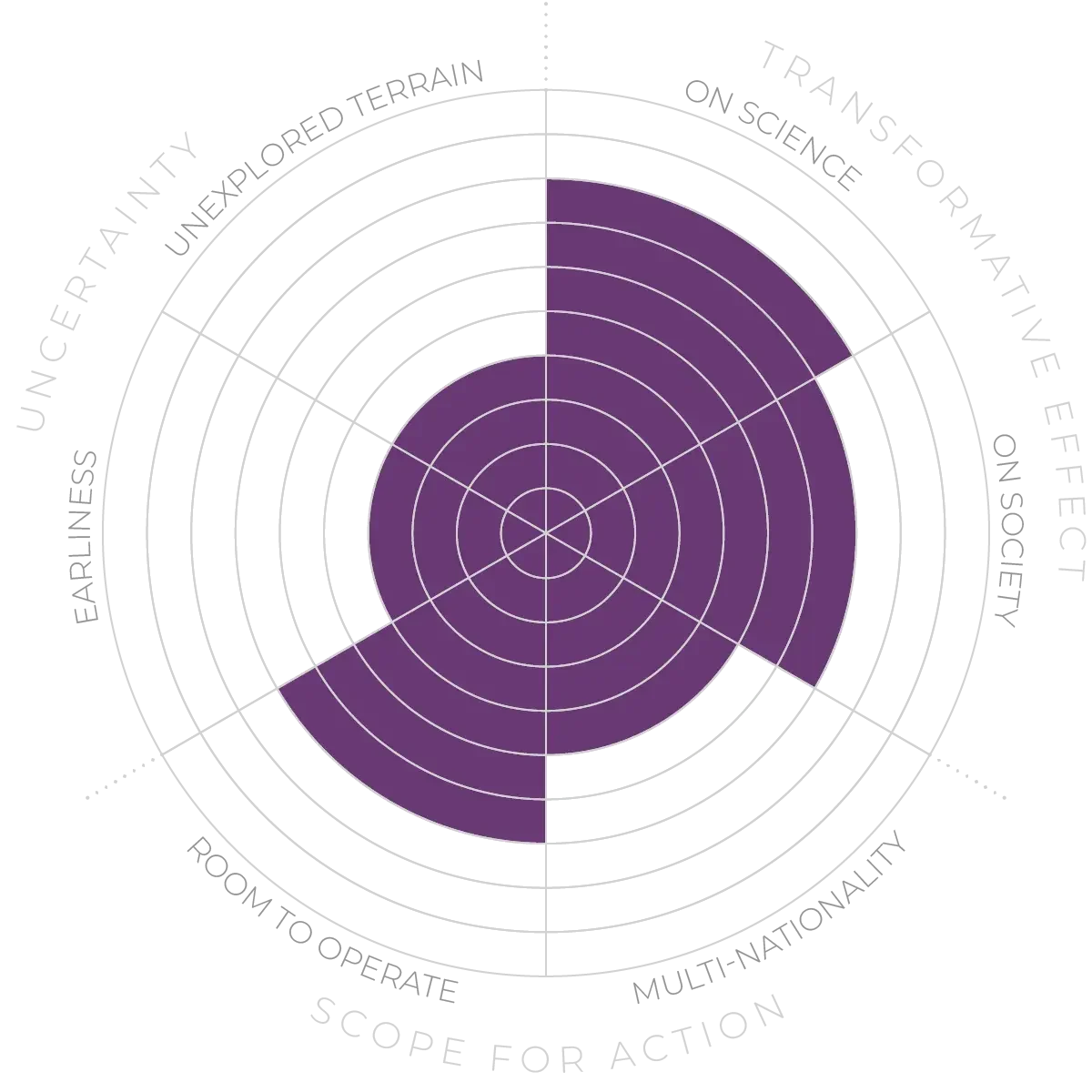Future Horizons:
10-yearhorizon
Quantum advantage is widely accepted
25-yearhorizon
The million logical qubit era arrives
A range of hardware approaches exist: superconducting qubits; neutral atoms; trapped ions; photonics implementations; spins-in-silicon; diamond nitrogen-vacancy centres and several more. There is also a range of architectures: some are based on digital logic gates, others are analogue implementations. All of them have advantages and disadvantages, depending on the envisaged application. As yet, there is no consensus on which approach, or approaches, will ultimately achieve quantum computing that goes beyond what is classically possible. The era of useful quantum computing will probably see a wide-ranging set of options used, with each one suited to different kinds of tasks, running algorithms designed to take advantage of the hardware’s specific features and capabilities.
There is currently no metric by which the various hardware approaches can be compared, but many of them are now sufficiently advanced to allow on-site or remote access (via the cloud) to interested parties. This has created a positive feedback regime, where users are contributing to design and performance improvements. However, the machines and design principles that currently exist are likely to be only a bridge to better future approaches, so there are good scientific and economic reasons for holding off on scaling up many of the current systems.
Quantum Hardware development - Anticipation Scores
The Anticipation Potential of a research field is determined by the capacity for impactful action in the present, considering possible future transformative breakthroughs in a field over a 25-year outlook. A field with a high Anticipation Potential, therefore, combines the potential range of future transformative possibilities engendered by a research area with a wide field of opportunities for action in the present. We asked researchers in the field to anticipate:
- The uncertainty related to future science breakthroughs in the field
- The transformative effect anticipated breakthroughs may have on research and society
- The scope for action in the present in relation to anticipated breakthroughs.
This chart represents a summary of their responses to each of these elements, which when combined, provide the Anticipation Potential for the topic. See methodology for more information.



